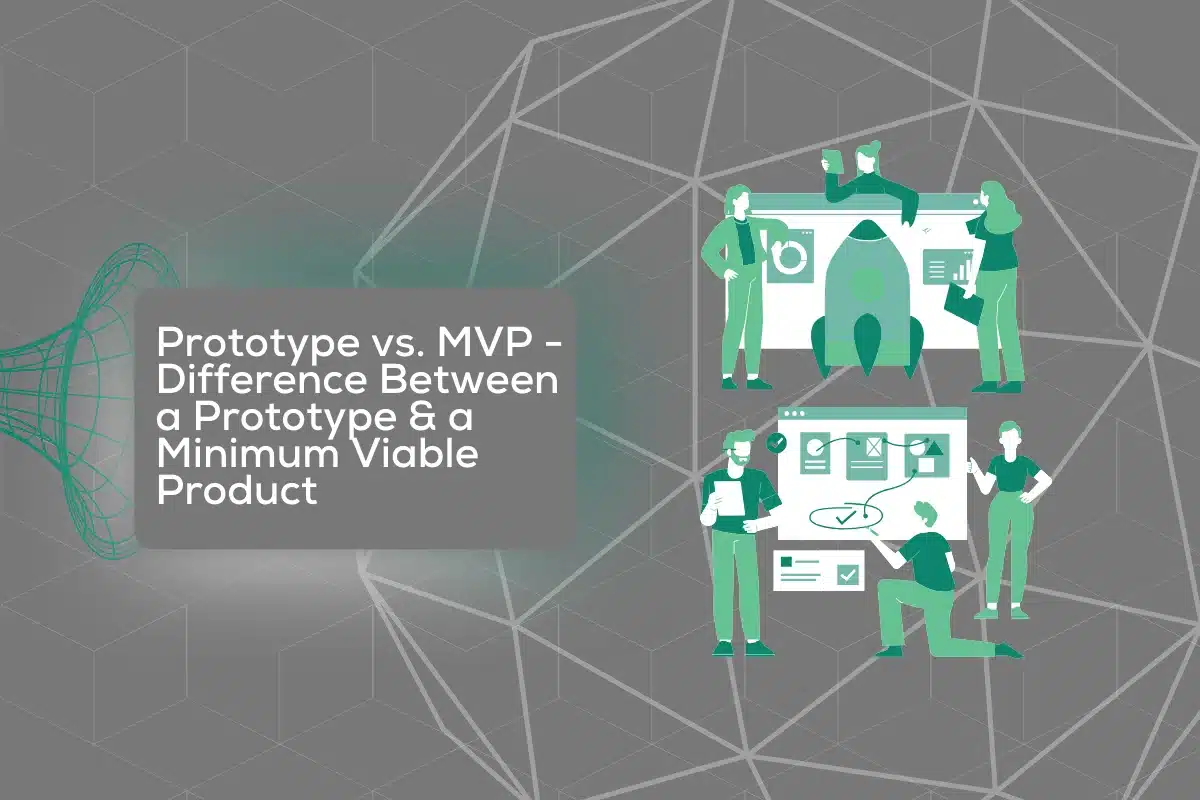Gaining a proper understanding of the distinction between a prototype vs. MVP is essential for aspiring entrepreneurs. Validating a product’s usefulness and success can be done in different ways. In the IT industry, minimum viable products and prototypes are frequently employed to gauge the acceptance of a business idea by potential users. Let’s now determine the distinction between an MVP and a prototype.
What Is an MVP?
An MVP, or minimum viable product, refers to the product’s most basic version that is released to early adopters to test a new business idea. With MVPs, companies can validate the demand for potential products without wasting significant resources since the focus is only on core functionality. MVPs are supposed to collect feedback from the users, which in turn helps a team improve upon the initial idea.
Benefits of a Minimum Viable Product
Creating an MVP offers multiple benefits, especially for businesses and startups at the beginning of the product’s journey. The goal is to streamline the development process and focus only on the main objective, which is answering the question of whether users really benefit in any way from a certain app or software. The benefits that can be expected:
- Cost-effectiveness,
- Risk mitigation,
- Flexibility,
- Resource optimization,
- Faster feedback,
- Stakeholder engagement.
So, in case you desire to invest in app development services or front-end development services, choose companies that deliver such benefits by creating good MVPs and testing the user experience.

What Is Considered a Prototype?
A product prototype acts as a mock-up, designed to showcase the product’s essential operations and UX and UI blueprint. This concept illustrates a software’s foundational design and purpose, though it might not be wholly operational. Companies design prototypes to discern user pathways and pinpoint design discrepancies. Prototypes can be in different forms, be it a simple sketch or even an interactive model.
For instance, a mobile app development company might develop an app prototype to test out its core functionality. Designing a working mock-up for a mobile app is a valuable way to evaluate design choices, UI, and user experience. It’s also crucial for obtaining user feedback and winning support from stakeholders, including investors.
Advantages of Prototyping
How will the customers or users interact with the product? That is the primary question that this concept focuses on, and the team in charge of developing the software or app needs to answer it. Here are the advantages that you can expect from prototypes:
- It’s time and cost-effective, the product’s problems are nipped in the bud,
- The team can understand what is expected from the software,
- It validates the product’s usability and UX/ UI,
- It provides clarity on product feasibility.
Are Prototypes Similar to POC?
It’s crucial to note the distinction between a prototype and a proof of concept (POC) when seeking software and hardware prototyping services. While a POC delves into a product’s technical feasibility, a team will build a prototype that emphasizes the aesthetic and functional facets of how the end product will present itself.
Proof of Concept (POC) vs. Prototypes
To gain further insight into these concepts, it’s best to start by checking an overview of some aspects of POC and prototypes contained in the table below.
| Type | Prototype | POC |
|---|---|---|
| Tools | Apps without backend and presentations | Sign-up sheets, landing pages, market research and interviews |
| Audience | Stakeholders | Technical teams and investors |
| Goal | Demonstrate the concept of the business idea | Prove technical feasibility |
| Results | Further investment is expected | Not for sale |
| User feedback | General feel and look of the product | Product concept |
Differences Between a Prototype vs. MVP
When it comes to comparing an MVP vs. a prototype, the advantages and key aspects of the two concepts seem intertwined and similar. Still, there are significant differences regarding the target audience, goal, use, risk evaluation, and time needed for developing them. These distinctions set the stage for a deeper understanding of their roles and benefits in the product’s success.
#1 Purpose of Prototyping an App vs. the Goal of Developing a Minimum Viable Product
The purpose of prototyping an app, for instance, is to visualize and test the design and concept, allowing stakeholders and developers to understand its functionality and UX before committing to developing the idea in full-scale.
On the other hand, the goal of developing MVPs is to introduce a basic but product’s functional version to the market, with the primary aim of gauging user feedback and interest and validating the product’s value proposition.
#2 Prototype Functionality vs. MVP Functionality
When investing in MVP software development, you will get a completely functional end result. Even though it has minimal features, it’s still complete. Conversely, prototypes are just simulations of software, designed only to feel and look like real products.

#3 Different Target Audiences
When building prototypes, the primary target audience usually consists of internal teams, select focus groups, and stakeholders since the aim is to gather preliminary feedback and redefine concepts. When testing an MVP, the audience that is targeted are actual users and potential customers.
#4 The Time Needed For Prototyping and Minimum Viable Product Development
Prototyping, generally, takes anywhere from a few days to a few weeks, especially when we’re considering rapid prototyping software development. The focus is on building a visual or tangible representation without wasting time on backend functionalities. A completely different approach is needed for MVPs, which require minimum features that are market-ready. For this reason, weeks and months are needed to develop them properly.
#5 Risk Evaluation
Prototyping is essential for evaluating whether the user will be satisfied with the product. The important question that needs to be answered is – is the design usable? MVPs are there to eliminate other risks, such as – is there a market for such an app, software, or any other business idea?

Trust Juratech, the Best Team for Minimum Viable Product Development
Whether you’re interested in mobile app development services, backend web development, or frontend web development services, have the right team by your side to put your business ideas to the test. Get invaluable feedback from early adopters and users on a new business idea that can provide your startup with a pathway to success. Juratech Solutions offers a strategy and means to achieve your goals, so contact us or visit our website for more information on what we do.







